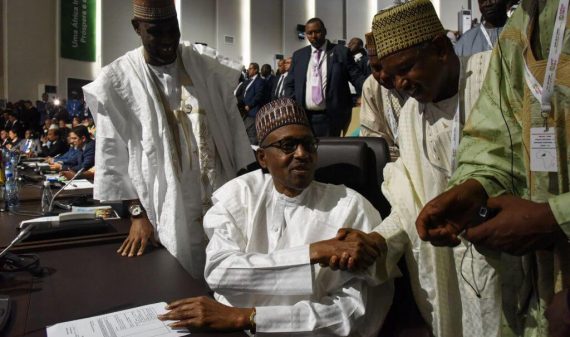The reactions since the commencement of trading under the African Continental Free Trade Area (AfCFTA) on January 1, 2021 are similar to previous regional and continental projects in Africa: AfCFTA for many young Africans, entrepreneurs, and startup owners was a welcomed development. It was, for foreign economists, Africa’s most “ambitious” project to date.
For critics of “pan-Africanism” or government officials in some African countries, AfCFTA raises more problems and questions than answers: what is the role of China and the U.S. in the agreement? Isn’t the project a form of neocolonialism and neoliberalism aiming to benefit the capitalist world? The questions go on.
The points being raised by those skeptical of AfCFTA cannot be overlooked. Although confining the initiative, just like other African projects, into the Chinese influence, American or other foreign powers’ domination undermines the aspirations of Africans themselves.
The plan to create an economically integrated Africa could be traced back to decades ago under the Organization of African Unity, now African Union (AU). AfCFTA, which was established in 2018, stemmed from various summits, frameworks, and treaties.
The Monrovia Declaration of 1979 aimed at maximizing the benefits of Africa’s natural resources for the wellbeing of Africans, while the Lagos Plan of Action, 1980 sought to clarify the important economic sectors and policies, and to increase the continent’s self-sufficiency. The Abuja Treaty of 1991 which established the African Economic Community and other subsequent agreements adopted by regional blocs and countries also bolster the integration agenda.
The first of its kind in Africa, AfCFTA is facing a lot of challenges but it also brings a lot of positive prospects to 1.3 billion Africans worth $3.4 billion dollars.
However, the direct path to AfCFTA started in January 2012 in Addis Ababa, Ethiopia when the 18th Ordinary Session of the Assembly of Heads of State and Government of the AU resorted to establishing a Continental Free Trade Area (CFTA) and endorsed an action plan on Boosting Intra-Africa Trade (BIAT) with focus on areas such as trade policy, intra-trade facilitation, productive capacity, trade-related infrastructure and information, trade finance and market integration among others.
The 2017 deadline to establish AfCFTA wasn’t met until March 21, 2018, when 44 out of 55 member states in AU signed the African Continental Free Trade Agreement in Kigali, Rwanda. The agreement, as of March 4, 2021, has been signed by all member states of the AU except Eritrea, thus makes it the largest free trade area in the world in terms of member countries with a total population of 1.3 billion.

VIDEO: AFCFTA: The World’s Largest Free Trade Area
Expectations and prospects
Expectations from AfCFTA are high, likewise the economic prospects. The core objectives of the initiative are to unify the African market for goods and services, increase intra-trade and free movement of people to further accelerate the continent’s economic integration within the framework of the AU’s vision for a prosperous and peaceful continent, also known as Agenda 2063.
AfCFTA initiative is also considered a backbone for other ongoing and future continental projects, including the Single African Passport (AU Passport), the Single African Currency among others to promote inclusive social development and achieve economic sustainability across the continent.
The initiative, if executed well. is expected to lead to an increase in trade flows and intra-trade within the continent by 53.2% after the reduction of import duties and the removal of non-tariff barriers. It will help African businesses to meet the needs of growing markets within the continent, and also help member states to diversify their exports, accelerate their growth and attract foreign direct investment.
The benefits of AfCFTA can also go beyond providing solutions to the problem of exports and imports, to limiting the neocolonialist policies, most especially with the increase in calls for an end to French “intervention” in the Sahel and foreign exploitations in other parts of the continent.
The rapid population growth and the number of young Africans, who are expected by 2030 to make up 75 percent of those under the age of 35, also mean that there is an urgent need to create new job opportunities by providing supports and infrastructures for the establishment of new local industries and startups. It can present numerous opportunities for youth and serves as an effective tool for enhancing peace and security within the continent.
Implementation and challenges
Africa in coming months and years will witness rounds of negotiations at the headquarters of the AU in Addis Ababa and the Secretariat of AfCFTA in Accra, Ghana, for dialogues and agreements between the member states on the movement of capital and people, investment facilitation, and finalizing the establishment of a continental customs union.
Recommended
The main challenges facing AfCFTA are related to the political will of African governments and policy implementations, such as their total readiness to open borders, trade with each other, and comply with customs regulations and unified border policies. There are concerns about the possibility of ceding national sovereignty for the sake of the Pan-Africa agenda, the difficulty of ensuring an equal or balance level of benefit for all member states, and weak infrastructures that are crucial to achieving the free movement of goods and services.
Also, Adjusting national laws and policies to suit AfCFTA’s agreement might incur huge costs in member states and heighten the sense of “loss of identity” in some countries, especially with the rise of “Xenophobia-Afrophobia” in South Africa.
Opening borders could complicate national economic and local market crises due to competition between different economies and companies. This has been the argument of the Labor Union and small manufacturers in Nigeria, a country with a population of 200 million and a nominal GDP of $376 billion which accounts for about 17% of Africa’s GDP. The country also refused to ratify the free trade agreement until it bowed to pressure in November 2020.
Another issue of concern is the free movement of people. Some argued that opening borders in a region that is facing insurgency and armed militant conflict can destabilize the continents’ stability because free movement of goods and people has the potential of intensifying the movement of contrabands, ammunitions, and terrorist groups.
There are growing restrictive trade policies between African countries and hostile attitudes toward each other. In East Africa, there is an ongoing conflict between Somalia and Kenya over a maritime border dispute, rising tension between Ethiopia, Sudan, and Egypt over the Grand Ethiopian Renaissance Dam (GERD), and a border crisis between Sudan and Ethiopia, while Nigeria in West Africa recently opened its land borders with neighbors which were closed for 16 months.
The possibilities that present the best opportunities from AfCFTA are also the ones that could lead to catastrophes if implementations go wrong. Although, judging by the economic situations in most African countries and the impacts of the COVID-19 crisis, the advantages that the bloc presents to Africa are far greater than the concerns being raised.





